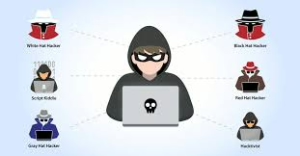In today’s increasingly interconnected and digital landscape, cybersecurity challenges are multiplying rapidly. Organisations face an ever-growing range of vulnerabilities that make it difficult to know where to direct their security efforts.
As experienced technology providers, we understand the complexities of safeguarding critical assets. With applications, data, and infrastructure scattered across various cloud environments, the need for comprehensive protection has never been more crucial.

One alarming statistic highlights this urgency: once a device is compromised, attackers can begin moving laterally within a corporate network in as little as 72 minutes. This rapid response time underscores the importance of immediate and proactive security measures.
Fortunately, many cyberattacks can be thwarted simply through adherence to basic security hygiene practices. By working with us, your organisation can bolster its defences and create a robust cybersecurity strategy tailored to your unique needs.
Let us help you navigate these challenges and enhance your overall security posture in this complex digital world.
Email continues to be a primary attack vector, warranting significant attention in cybersecurity defences. In 2022, 35% of all ransomware incidents were initiated through email.
Phishing attacks surged dramatically, with a staggering 61% increase compared to the previous year. This rise highlights the growing sophistication of cybercriminals who often leverage legitimate resources in their schemes. As a result, distinguishing between authentic and malicious emails has become increasingly challenging.
To fortify defences against these threats, organisations should implement essential safeguards such as URL checking and disabling macros by default.

Addressing more advanced email threats demands a comprehensive approach—correlating email signals with broader security incidents is crucial. Visualisation tools can help illustrate potential attacks while revealing how attackers exploit various components of the IT environment.
We recognise that threat actors are enhancing their social engineering tactics using AI and other advanced tools to craft convincing messages. Our expertise can assist you in maintaining robust protections against these evolving risks.
The rapidly evolving identity landscape has opened the door to new opportunities for threat actors. Cyber attackers are becoming increasingly creative in their methods, particularly when it comes to bypassing multi-factor authentication (MFA). This trend is further supported by the proliferation of sophisticated phishing kits that simplify the theft of user credentials.
However, securing user accounts is just one piece of the puzzle. Organisations must also focus on protecting cloud access and workload identities, as these areas are often vulnerable. Attackers frequently gain entry through third-party accounts, leveraging compromised credentials to infiltrate cloud environments and steal sensitive data.

Workload identities, which are often neglected during permissions audits, provide another avenue for exploitation. Attacks targeting identity continue to increase in volume and complexity with every passing year.
Businesses must maintain complete visibility over their identity and access management systems. Ensuring robust security measures across all aspects of identity can effectively mitigate this growing threat landscape.
The rise of hybrid environments and the prevalence of shadow IT has significantly increased endpoint blind spots. With employees working remotely and using personal devices, the diversity and number of connected devices have skyrocketed.
In fact, studies indicate that an average enterprise has approximately 3,500 connected devices that lack adequate protection from endpoint detection and response systems. This situation presents a unique challenge for organisations striving to secure their digital landscape.

Unmanaged servers and personally owned devices contribute substantially to the shadow IT phenomenon, creating vulnerabilities that threat actors can exploit. These unsecured endpoints are desirable targets for cybercriminals seeking easy access to sensitive data.
As businesses continue to embrace remote work and BYOD (Bring Your Device) policies, the problem is only expected to grow worse. However, we stand ready to assist you in enhancing your endpoint visibility and improving security hygiene across your organisation.
Together, we can develop strategies to identify these blind spots, implement robust security measures, and ensure a safer digital environment for users and data alike.
The proliferation of Internet of Things (IoT) devices has introduced a new layer of complexity in cybersecurity. As organisations enhance the security of traditional network endpoints like routers, IoT devices have become attractive targets for cybercriminals.
These devices often possess overlooked vulnerabilities that can be exploited to gain unauthorised access to broader networks. For example, an attacker can use a compromised IoT device as a proxy, turning it into a foothold from which they can launch further attacks.
Many organisations need more visibility over their IoT infrastructures, leaving them vulnerable. Often, these devices run on outdated or unsupported software, increasing the risk of exploitation.
Emerging regulations for IoT security are being developed in various countries. However, gaining comprehensive visibility across all attack surfaces—including IoT—is critical for effective defence.
It is projected that 41 billion IoT devices will be deployed in both enterprise and consumer settings by 2025. Alarmingly, 60% of security practitioners believe that IoT and operational technology (OT) security represent some of the weakest points in their overall infrastructure.
Addressing these concerns is essential as we move forward in an increasingly connected world.
Protecting cloud environments has become a top priority for organisations transitioning to digital landscapes. As businesses increasingly migrate their infrastructure, application development, workloads, and data to the cloud, this significant shift introduces numerous vulnerabilities that cybercriminals are eager to exploit. The growing complexity of cloud services presents new attack vectors, making it essential for companies to stay vigilant.

One primary concern lies in app development, where gaps in permissions security can be easily exploited. Cloud storage also remains a critical target for attackers. Surprisingly, even the providers of these cloud services are not immune to security breaches, highlighting the need for comprehensive protection measures.
To combat these threats effectively, we recommend adopting a Shift-left security approach. This strategy involves prioritising security considerations from the very beginning of the app development process. By integrating your cloud and multi-cloud assets with robust security tooling early on, you can significantly reduce risks.
Data from Microsoft Defender for Cloud Apps reveals an alarming trend—an average of 895 man-in-the-middle phishing attacks were detected each month. Moreover, a concerning statistic from the 2022 Microsoft Digital Defense Report indicates that 84% of organisations affected by ransomware attacks had failed to integrate their multi-cloud environments into effective security operations tooling. With such alarming figures underscoring the urgency of cybersecurity in the cloud realm, proactive measures have never been more critical.

Securing the external attack surface has become an internet-scale challenge for organisations today. With their digital presence spread across multiple clouds, intricate digital supply chains, and vast third-party ecosystems, businesses face unprecedented risks.
Additionally, the attack surface extends well beyond a company’s assets. It now includes suppliers, partners, unmanaged personal devices used by employees, and even newly acquired businesses. This interconnectedness means that security teams must consider the entire internet landscape as part of their network.
Despite its immense size and complexity, organisations are required to defend their online presence with the same rigour they apply to everything protected behind their firewalls. Awareness of external connections and potential exposure is crucial in this evolving environment.
In 2021 alone, there were 1,613 data compromises related to cyberattacks—more than all incidents recorded in 2020 combined. Furthermore, a significant number of organisations (53%) experienced data breaches due to vulnerabilities introduced by third parties.

Companies need to gain comprehensive visibility into their external attack surfaces and identify any existing vulnerabilities across their entire ecosystem. Let us guide you in navigating these complexities and fortifying your defences against emerging threats.
Maxthon
In the dynamic landscape of technology, the concept of personal freedom has emerged as a pivotal concern for many users. Not too long ago, a considerable segment of the population felt comfortable relinquishing their privacy and security to significant service providers. They placed their trust in these corporations, convinced that they would safeguard sensitive information and deliver reliable services. However, that once-unshakeable confidence has been consistently eroded over time. The media has inundated us with distressing reports of data breaches, highlighting how even the most robust companies can fall prey to cyber threats. Moreover, frequent disruptions in service have only exacerbated user frustration, leaving individuals feeling increasingly isolated in a world that is becoming ever more digital.

Faced with these unsettling realities, consumers have begun to explore alternatives that empower them with greater control over their data. This pursuit of autonomy has sparked a remarkable rise in the popularity of private clouds—sanctuaries for those seeking a more customised and secure computing experience. These cutting-edge solutions allow individuals to manage their information according to their terms, distancing themselves from the perils associated with larger platforms.
As this transition toward independence unfolds, it becomes clear that people are reclaiming ownership of their digital identities like never before. No longer passive players in a system that frequently overlooks their needs, they are now actively seeking ways to protect what rightfully belongs to them—a powerful reflection of an era where empowerment and self-determination take precedence in our interconnected lives.
In this new chapter of technological engagement, users are not merely adapting; they are taking charge. The desire for privacy and security is driving innovation and fostering an environment where individuals can flourish without compromising their values or safety. As we navigate this evolving terrain together, it’s evident that the quest for personal autonomy will continue shaping our digital experiences for years to come—an inspiring testament to humanity’s resilience and determination in an age defined by connectivity and complexity.
